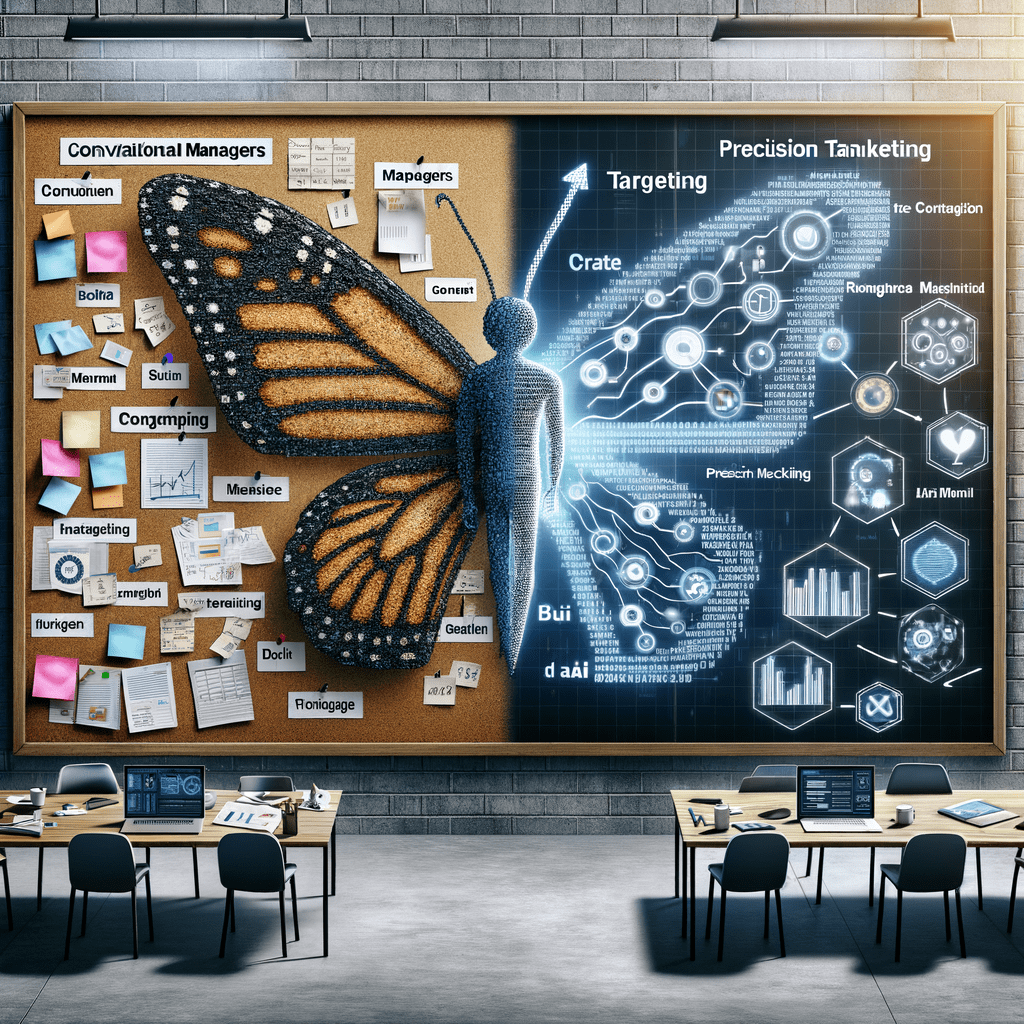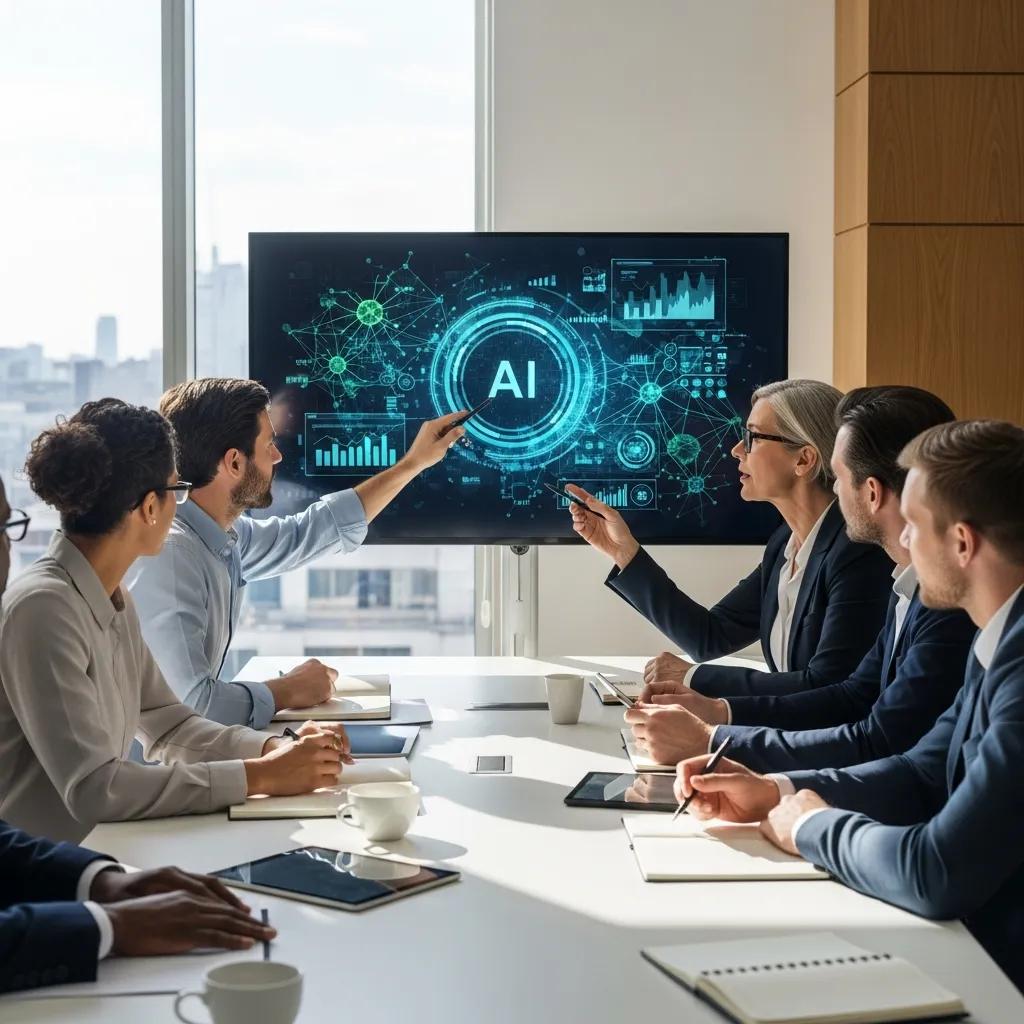As a small to mid-sized business owner, you’re likely hearing a lot about generative AI. You might be wondering how AI technologies fit into your marketing plan. This post explores compelling generative AI marketing examples to spark some ideas. We’ll share how AI is transforming marketing for businesses like yours, focusing on helping your employees and your bottom line. Let’s explore these real-world applications, including some surprising uses.
In today’s digital world, staying competitive means embracing new AI technologies. Generative AI is quickly becoming an essential marketing tool. From creating captivating content to optimizing marketing campaigns, AI is no longer a futuristic concept; it’s here now.
Real-World Generative AI Marketing Examples
Here are a few ways companies use generative AI:
- Content generation: AI writes blog posts, creates social media posts, and drafts email newsletters, freeing up human marketers for more strategic tasks.
- Personalization: AI allows companies to offer personalized product recommendations or targeted ads on social media.
- SEO: AI tools like SEMrush and SurferSEO aid in keyword research, competitor analysis, and website optimization.
These generative ai models are rapidly changing how we approach marketing.
Case Study: Nutella’s AI-Powered Labels
Nutella used AI creatively, generating 7 million unique labels for Nutella jars.
These special labels sold out quickly.
This innovative example shows how AI can boost engagement and excitement around a product.
Boosting Your Brand with Generative AI
Let’s look at how generative AI can impact your marketing.
Content Marketing and Creation
AI empowers your existing marketing team with new capabilities and simplifies their current tasks, rather than replacing them. Imagine using AI to create compelling ad copy, write video scripts, translate content, generate blog topics based on current search trends, or even research niche keywords. With AI assistance, you can generate engaging and timely blog content; it’s no surprise that nine out of ten marketers already use and trust AI.
This translates to significant time savings, with some creators reporting over 5 hours saved per week.
While AI content generation can save time, the output quality depends on the training data. Always review and refine AI-generated content.
Email Marketing
Personalized email subject lines created with AI have shown improved open rates.
For example, Farfetch increased promotional email open rates by 7% and cart abandonment email open rates by a remarkable 31%.
This shows that generative AI can complement, not replace, human writers.
Customer Segmentation
Boston Consulting Group (BCG) found that 41% of CMOs use AI for improved customer targeting.
This involves understanding customer behavior, online activity, and past purchases. For e-commerce companies with diverse products and demographics, this data allows for more meaningful and personalized messaging.
Such personalization builds customer loyalty and increases retention, alongside improved ROI. You can create customized content for the individual needs of your customer. With machine learning, generative ai marketing improves with every interaction. The more customer data available the stronger the ability to predict trends and tailor the marketing approach, creating content the resonates. This deep learning technology opens doors to new levels of personalization using tools like generative AI and predictive analysis.
FAQs about Generative AI Marketing Examples
How is Generative AI Used in Marketing?
Generative AI automates tasks like content creation, personalizes customer interactions, conducts market research, enhances visuals and videos, and develops chatbots. AI marketing allows marketers to personalize content down to individual customer journeys and improve the customer experience. AI advertising is also emerging with innovative applications like automating repetitive tasks and personalizing customer service for individual customer needs. Generative ai tools, when used effectively with real time customer data, have been shown to improve ad performance and increase brand awareness.
What are Some Generative AI Examples?
Generative AI tools include DALL-E 2 for image generation, ChatGPT for text, and Runway for videos. They offer marketing organizations significant capabilities for enhancing social media posts and video ads by including compelling visuals effects and video production. There are many ai models designed to enhance every aspect of your current workflow, whether your content creation involves images or videos or product descriptions.
What is an Example of AI Marketing?
Amazon’s product recommendations based on your browsing history are a prime example of AI marketing. Here are additional ai advertising marketing examples. Other AI-driven marketing approaches can even personalize the website visitors experience, creating a custom landing page based on information they gather from customer interactions across social media and websites.
How is Nutella Using AI in Marketing?
Nutella used AI to generate over seven million unique labels for a limited-edition run of jars, which quickly sold out.
Impactful Conclusions for Marketing Success
Generative AI marketing examples showcase its potential to revolutionize the field. However, this technology is not a magic solution for a weak product or strategy. You might need AI-powered tools, such as generative AI and predictive analysis, to scale efforts for a successful product in new markets if testing shows positive results.
If you lack resources for thorough market research, consider strong AI marketing tools. For those struggling with competitor research, AI provides valuable support, improving marketers’ skills. Focusing AI resources on areas where your business has gaps will maximize the technology’s impact and allow your team to focus on their strengths.






